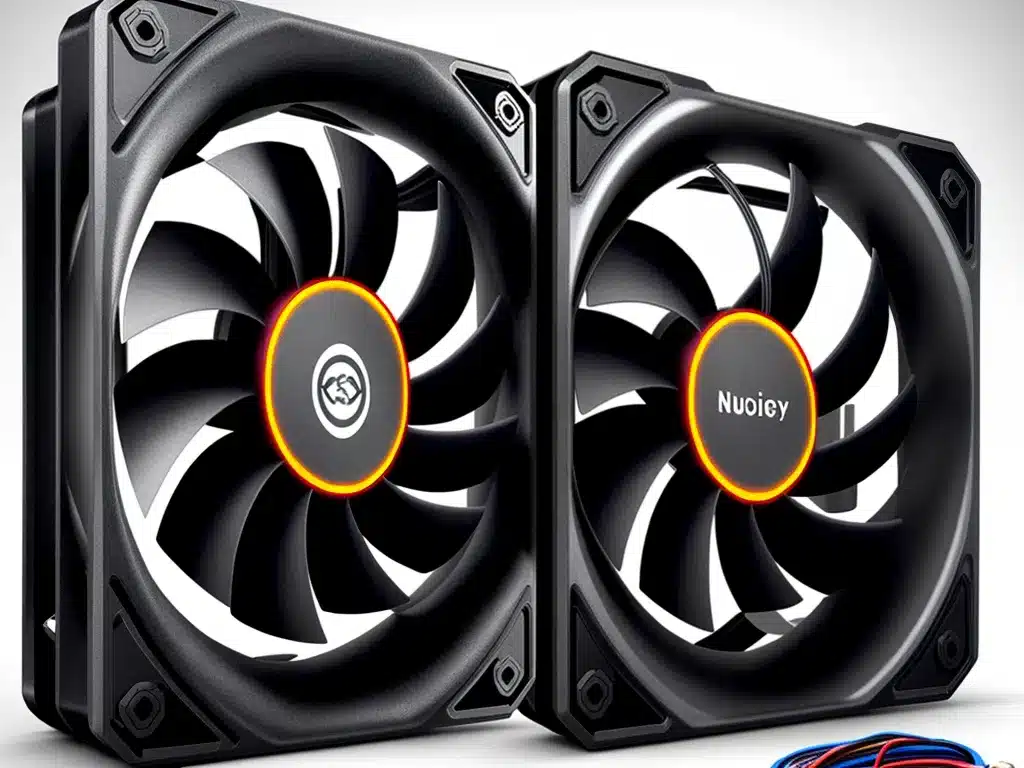
Introduction
A noisy computer can be extremely distracting and annoying. As a PC enthusiast and builder, I’ve dealt with noisy case fans and wanted to eliminate that irritation. Through trial and error, I’ve learned some great tips for fixing noisy case fans and reducing overall PC noise. In this guide, I’ll share everything I’ve learned about identifying the causes of noise, choosing quieter fans and components, properly installing fans, and using fan controls and sound dampening materials. By following these best practices, you can troubleshoot fan noise issues and create a whisper-quiet PC.
Diagnosing the Source of Noise
The first step is figuring out exactly where the noise is coming from. Here are some common culprits and how to isolate them:
Faulty Fan Bearings
- Listen closely to each fan and see if you can pinpoint one making more noise than others.
- Stop each fan briefly using your finger or a pencil to see if the noise lessens.
- Faulty bearings usually create scratching, grinding or buzzing noises.
Fan Mounting and Positioning
- Rule out contact with wires or parts of the case.
- Check that screws are tightened properly but not too tight.
- Make sure there are proper spacers between fans and heatsinks.
Airflow Obstructions
- Ensure fans have clearance and airflow paths are not blocked.
- Clean dust filters and heatsink fins which can restrict airflow.
High Fan Speeds
- Download software to monitor fan speeds (like SpeedFan).
- Identify fans running faster than necessary.
Choosing Quieter Fans
If you need to replace a noisy fan, look for options designed to be very quiet. Some key specs and features that reduce noise:
- Larger fan size like 140mm vs 120mm creates less noise at the same airflow.
- Low max RPM like 800-1200 vs 2000+ RPM means slower, quieter operation.
- Fluid dynamic bearings create less friction than sleeve bearings.
- Rubber mounts or corner dampeners absorb vibration.
- Sound-dampening blades with curved designs break up turbulent air.
I always check professional reviews that measure noise levels in decibels (dB). Look for fans rated at less than 20 dBA if you want near silent operation.
Proper Fan Setup and Control
With quality, quiet fans chosen, it’s extremely important to set them up in an optimal way:
- Use larger front/bottom intakes and smaller rear/top exhausts to maintain positive case pressure. This prevents air leaks and turbulence.
- Run intake fans slower than exhausts to reduce noise since intake air is unobstructed. Use fan controls to manage their speeds.
- Use fan grommets when mounting fans to the case to prevent vibration and humming.
- Tighten screws carefully – overtightening can increase bearing noise over time.
Also consider getting an advanced fan controller either as a standalone device or built into your motherboard or case. This allows you to precisely control the speed of each fan rather than just relying on BIOS settings. This way fans can run slower while idling and only speed up as needed when temps rise.
Sound Dampening Materials
Adding sound dampening materials converts noisy air turbulence into small amounts of heat, blocking noise:
- Case foam padding applied to side panels muffles noise coming from inside the case.
- Fan gaskets placed between fans and vents/grills absorb vibration.
- Anti-noise panels positioned around intakes silence turbulent air entering the case.
- Rubber fan mounts prevent transmission of vibration into the case.
Use vibration damping materials sparingly as they can slightly restrict airflow. Find a balance between noise reduction and ideal airflow for your components.
Summary
Eliminating noisy computer fans requires a multi-pronged approach. Carefully diagnosing the source of the noise, choosing quality quiet fans, proper installation and control, and sound dampening materials will lead to the best results. With some diligent troubleshooting and upgrades, you can transform an obnoxious noise machine into a peaceful purring PC. Let me know if you have any other tips for silencing unruly case fans!












